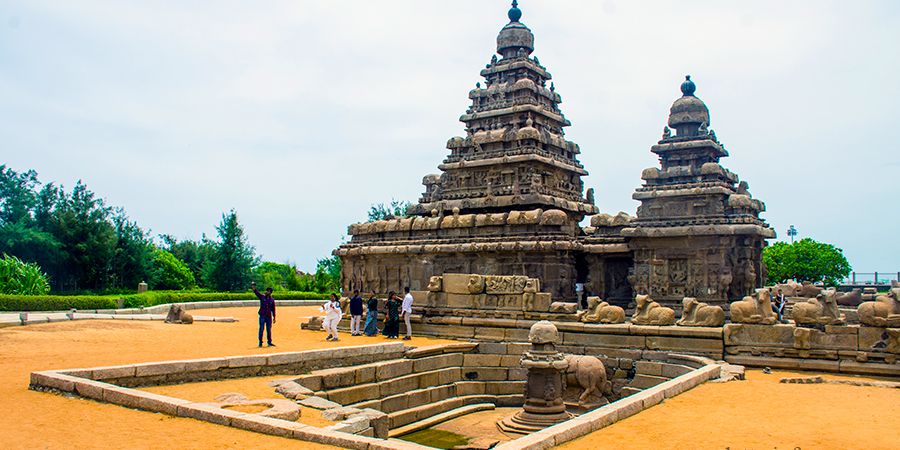

Mahabalipuram is an important place of classical Monuments in India, the monolithic and cave temples. It is also known as Mamallapuram. This place attracts large number of visitors from all over the world. It is situated close to the sea and it is rich in artistic wealth also. These monuments afford scope for not only the study ancient architecture and sculpture in the Tamil country. The rich portraits in stone of various deities, celestial beauties and epic stories are breathtakingly real. The shore temple, cave temples, the world’s largest is the pride of Mamallapuram India. It was once the flourishing port of the Pallavas an old lighthouse built of stone exists intact till date, proclaiming the glory of Pallava trade and maritime supremacy.
It is also the birth place of one of the first three Alwars Boothathalwar. Since Pallava kings were both Saivaites and Vaushnavaites. Mamallaburam has shrines of both beliefs. Though no formal worship is done today, large number of visitors come every day to enjoy the sculpture and splendour of Pallava art architecture. The monolithic and scooped out cave temples are of different dates.
The 7th and 8th centuries can be said to be the golden age of Embossed sculptures in Cave temples. Badami, Mamallai and Ellora Cave temples belong to this period. Giant Embossed sculptures can be found here. All of them are the origin of the events following the Puranas.
In the Mahishasuramarthini Mandapam, there are two contrasting images of Vishnu reclining gently and Durga fighting aggressively. In the Varaha Mandapam, the deities are placed in the center and given prominence, and various images are made to surround them. We can see amazing liveliness in these Cave temples.
Magabalipuram town lies on the Coromandel Coast which it faces the Bay of Bengal. It is an ancient sea-side town. This is an elegant place to watch which a well established sea port was during the 7th to 10th centuries of the Pallava dynasty. This was the second capital of the Pallavas who ruled Kanchipuram.
There is a story behind. The name Mamallpuram king Narasimha Varman I was a great and valiant warrior. He was given the title Mamalla which means ‘the great wrestler’ so the name was converted from Mahapalipuram to Mamallaburam considering the great king and his achievements. It was renamed Mahabalipuram which is called till now.
The pallavas rose to the pioneer in south India, after the decline of the Gupta Dynasty. They ruled over from the 3rd century till the end of the 9th century A.D. The best period of their rule was between 650 and 750 AD and this period was called as the Golden Age of the pallavas. The pallavas were very powerful. They were profound thinkers.
Mamallapurm city was during the rule of the pallavas, great poets, dramatists, artists, artisans, scholars and saints emerged. As one can say that the pallavas are the pioneers and forerunners of new styles both in art and architecture.
It is the best place to praise off their skill and talent. New sculptures and unique paintings were innovative and exuberant. This place itself became their exploring field and they made the best use of the resources. They game a shape and creative energy to what they imagined. It became a dream come true as it witnessed innovations in all styles.
The richness in Mamalapuram was not known to many, as these pallavas did not outlet and expose their quality and innovative creations to the outer world for obvious reasons. The aestheticism of here was hidden until the late 18th century. What is special about Mahapalipuram? Of course every one can point out the rock - cut caves, temples made from a single rock, temples and strives of different structures, and bas-reliefs which are so artistic and sheer creativity. Mamalpuram is referred as an ‘open-air museum’. The great pallava kings Narasimha I and Rajasimha have well preserved these stylistic qualities that one enjoys this place even in the present day.
